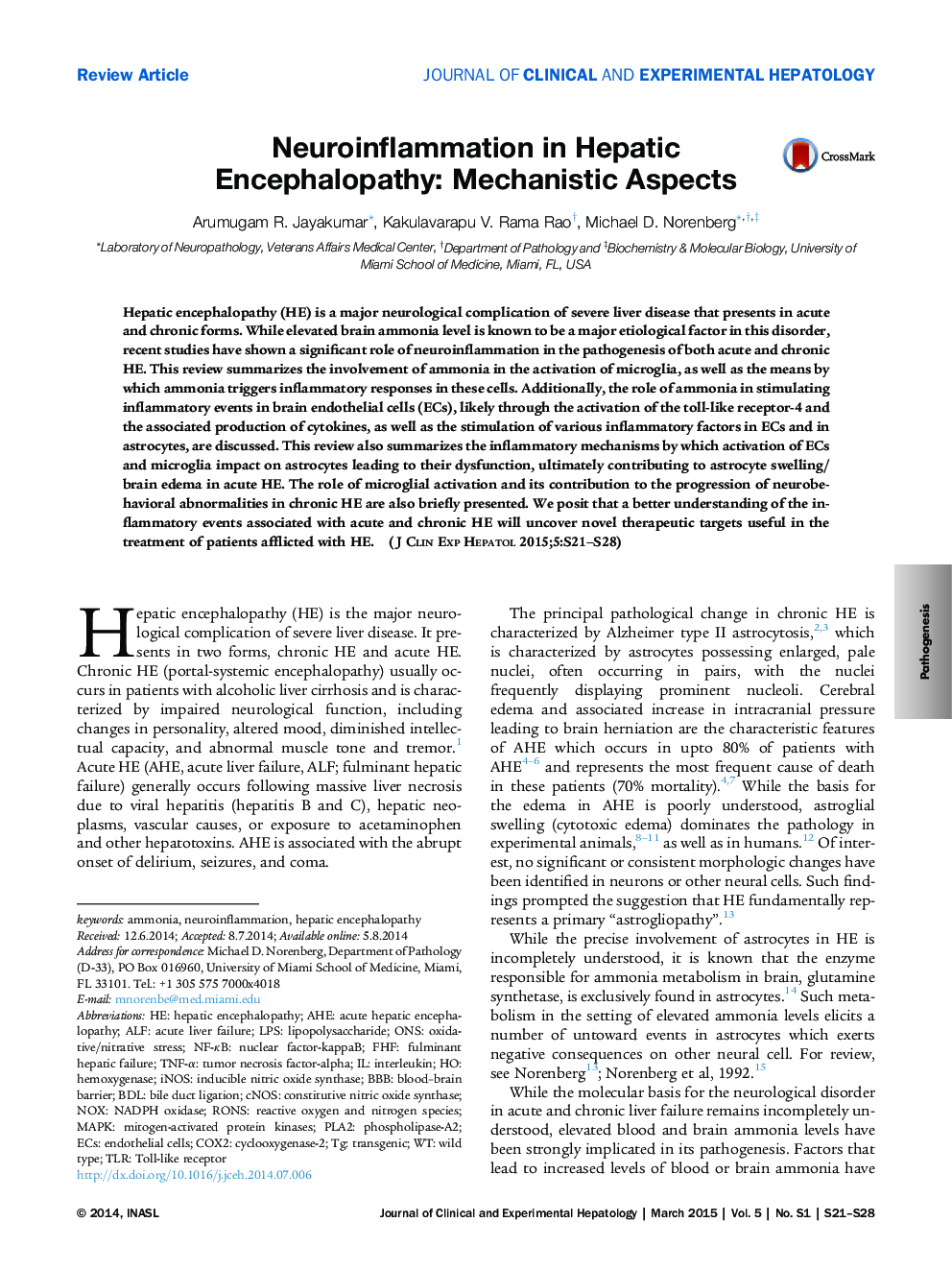| Article ID | Journal | Published Year | Pages | File Type |
|---|---|---|---|---|
| 3338691 | Journal of Clinical and Experimental Hepatology | 2015 | 8 Pages |
Hepatic encephalopathy (HE) is a major neurological complication of severe liver disease that presents in acute and chronic forms. While elevated brain ammonia level is known to be a major etiological factor in this disorder, recent studies have shown a significant role of neuroinflammation in the pathogenesis of both acute and chronic HE. This review summarizes the involvement of ammonia in the activation of microglia, as well as the means by which ammonia triggers inflammatory responses in these cells. Additionally, the role of ammonia in stimulating inflammatory events in brain endothelial cells (ECs), likely through the activation of the toll-like receptor-4 and the associated production of cytokines, as well as the stimulation of various inflammatory factors in ECs and in astrocytes, are discussed. This review also summarizes the inflammatory mechanisms by which activation of ECs and microglia impact on astrocytes leading to their dysfunction, ultimately contributing to astrocyte swelling/brain edema in acute HE. The role of microglial activation and its contribution to the progression of neurobehavioral abnormalities in chronic HE are also briefly presented. We posit that a better understanding of the inflammatory events associated with acute and chronic HE will uncover novel therapeutic targets useful in the treatment of patients afflicted with HE.
